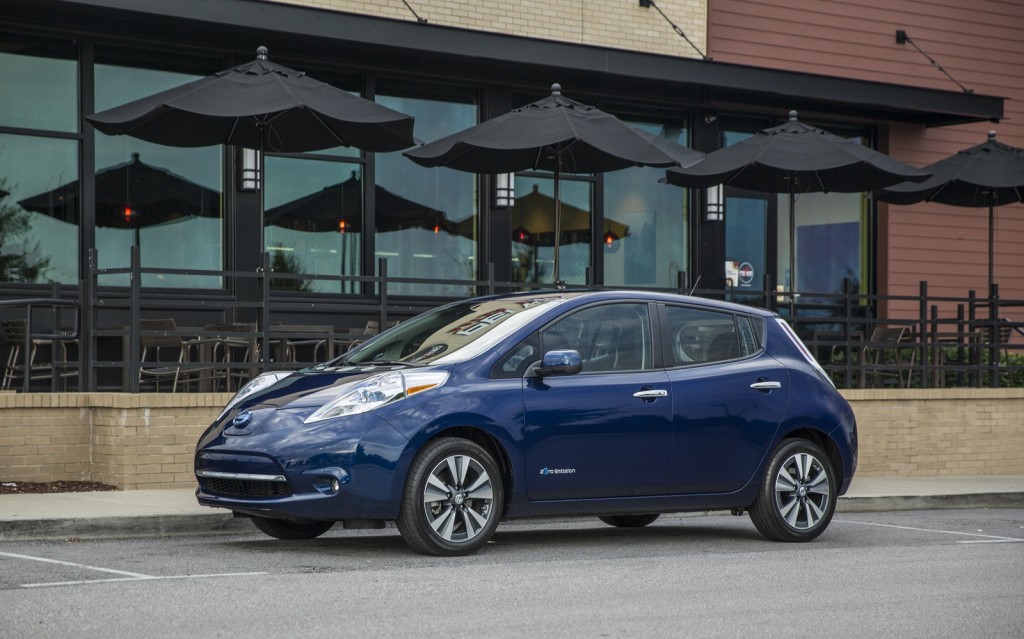Electric cars charged on the grid generally have a lower carbon footprint than internal-combustion vehicles--and their wells-to-wheels carbon emissions only shrink as more renewable energy comes online.
That's the conclusion of a new study on the environmental effects of future transportation electrification, jointly conducted by the Electric Power Research Institute (EPRI) and National Resources Defense Council (NRDC).
It follows and updates a landmark 2007 report by the pair that was among the first to analyze the long-term effects of electric cars, both on global carbon emissions and on electric-utility infrastructure.
DON'T MISS: In Just One Year, Electric Cars Have Gotten Cleaner: How'd They Do That? (Dec 2014)
A transition to more electric cars and greener grid-electricity sources, it confirms, could have a significant impact in reducing greenhouse gas emissions.
The study (divided into four parts at the link) confirms what several previous analyses have said: As the grid gets cleaner, so do electric cars.
Researchers calculated potential greenhouse-gas emission reductions between now and 2050 based on two scenarios.

2016 Nissan Leaf
The "Base GHG" scenario uses more conservative assumptions drawn from current and potential regulations, and "plausible economic conditions."
The "Lower GHG" scenario assumes a more aggressive approach to cutting emissions, including policies like taxing carbon.
Both scenarios assumed a fairly high rate of plug-in car adoption, with just over half of personal vehicle miles traveled (VMT) powered by grid electricity by 2050.
ALSO SEE: New Study Doesn't Say 'Electric Cars Aren't Green' (Headlines To The Contrary) (Dec 2014)
In the Base GHG scenario, researchers estimate transportation-sector greenhouse gas emissions could be reduced by 430 million metric tons (473 million tons) annually in 2050--equivalent to taking 80 million of today's passenger cars off the road.
That rises over time to 550 million metric tons (606 million tons) annually, equivalent to the emissions of 100 million of today's passenger cars.
Even today, researchers claim the average electric car has 54 percent lower lifetime carbon emissions than a comparable internal-combustion model.
![Sacramento Municipal Utility District electric car DC fast-charging site, Jun 2015 [George Parrott] Sacramento Municipal Utility District electric car DC fast-charging site, Jun 2015 [George Parrott]](https://images.hgmsites.net/lrg/sacramento-municipal-utility-district-electric-car-dc-fast-charging-site-jun-2015-george-parrott_100514521_l.jpg)
Sacramento Municipal Utility District electric car DC fast-charging site, Jun 2015 [George Parrott]
By 2050, they say the reduction could be much larger--as much as 59 to 71 percent, depending on the mix of grid-electricity sources.
Electricity grids will also get cleaner under both scenarios, researchers predict. Even under the Base GHG scenario, they estimate that by 2050, utilities could reduce annual greenhouse gas emissions by 45 percent compared to 2015 levels.
Under the Lower GHG scenario, the reduction could be as much as 77 percent, the study says.
MORE: Electric Cars: What's Needed To Eliminate Gasoline, Diesel In 25 Years
Combined figures for both the electricity and transportation sectors show a potential 48-percent emissions reduction from 2015 levels in the Base GHG scenario, and a 70-percent reduction in the Lower GHG scenario by 2050.
By that time, electric vehicles could account for 13 percent of grid-electricity use, assuming 62 percent of the light- and medium-duty fleets are electrified.
However, researchers believe this will happen gradually, giving utilities time to adjust to greater demand from drivers.
_______________________________________________












